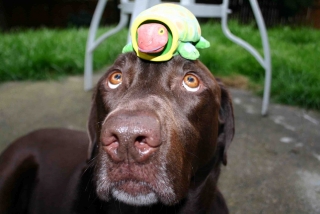Staying Power - the Hidden Art of the Dog Trainer

For those of you who don’t already know, in my other life I am a Karate instructor. I spend evenings teaching martial arts to a dedicated class of students who achieve amazing things both mentally and physically. Learning martial arts is partly a mechanical skill; you have to ‘do it to learn it’, rather like dog training.
Often, my private dog training clients inform me that they have tried dog training classes without success. The measure of this ‘success’ is highly personal to them, of course. They tell me their dog found the whole experience overwhelming. Some clients were asked to leave as a result of their beloved pet’s disruptive behaviour. Some struggled with a class taught using food-oriented motivation, which their dog did not find especially enticing given the other distractions on offer.
Was this entirely the class instructor’s responsibility, however?
If an instructor is not capable of teaching, there is no point staying to hear useless information over and over. Likewise a stressed dog and owner will not learn anything. Choose your classes wisely and check credentials. Nonetheless, even in the best classes, some owners attend a dog or puppy training course of around six weeks, then stop. They report disappointment that the training has not ‘cured’ their dog, nor has it turned the dog into a publicity-worthy leash-free good citizen.
In the style of Karate I study, students wear a coloured belt to designate the level at which they train. Some read this as an indication of skill, but it is not entirely this. What is important is that this grading system gives a clear view of who has stuck at it THE LONGEST.
With television feeding us a doggy diet of instant cures, it is not surprising that dog owners feel dissatisfied. I admit to similar frustrations! The social pressure to have a ‘good dog’ is immense. This makes instant results extremely attractive. It can make forced compliance the next option. That certainly makes for a fast-action TV show.
Returning to the Karate club for a moment. If a student attended for 6 weeks and then left, complaining that they were not transformed into the next Bruce Lee, Mr T, Jet Li, not even a Ninja Turtle, how would you view their efforts? Even for adults, the first and most basic coloured belt takes 4 months of solid training to achieve.
In a dog training class, you need to learn to become the trainer. Then, your dog needs time to learn from you. This makes two instructors and two students. This means a further convolution in this painstaking process.
Most owners can gain reasonable results with a dog far more quickly than it will take to get a black belt in Karate (lucky you). The key in both cases is to GIVE IT TIME.
I guarantee that if an ‘instant results’ TV guru walked into my Karate Dojo, they would need just as much time as the other students to gain proficiency. If that isn’t fast enough for the TV guru, maybe we could use one of their own speedy TV methods to ‘help’ them learn? Forced compliance in Karate is possible, but usually deemed bullying and is unacceptable. What a pity it is still an option for our dogs.
Copyright 2009 Karen Wild www.karenwild.co.uk




